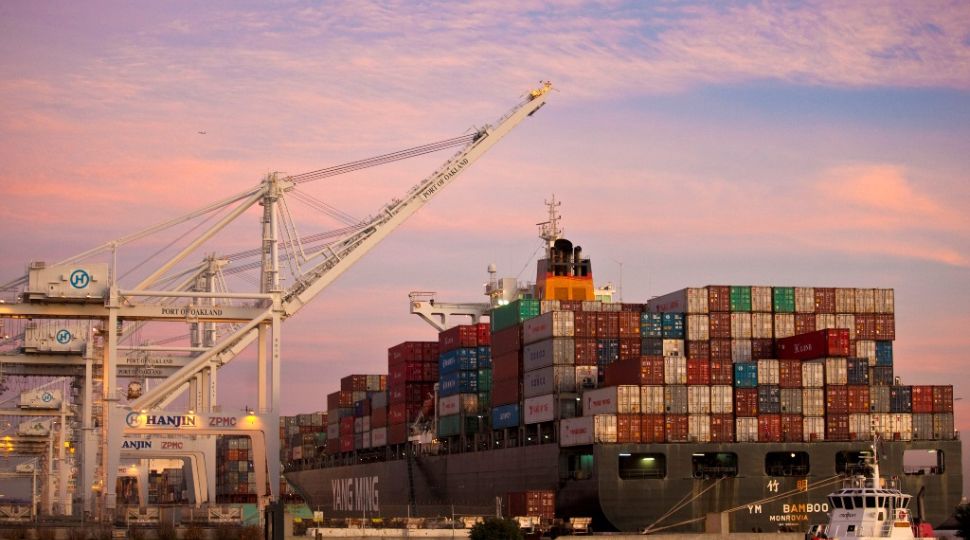China's Economy Amid the Trade Dispute with the U.S.

In July and August 2018, the U.S. imposed a 25% duty on imports worth $50 billion from China, and in September last year, a 10% duty on $200 billion worth of products (total exports from China to the U.S. were $540 billion in 2018). This was in response to the lack of concessions regarding the U.S. demands that China change its trade policy, including an end to forcing foreign companies operating in China to transfer technology. The latter responded with customs duties on $110 billion worth of imports from the U.S. Negotiations between the two sides collapsed in May and the U.S. tariff of September 2018 was increased to 25% (China responded by increasing customs duties by 5-25% on $60 billion worth of goods). After the G20 summit in Osaka in June, U.S. President Donald Trump and Chinese leader Xi Jinping announced the resumption of talks. In July, a meeting between representatives of the two countries in Shanghai was unsuccessful and was followed by a U.S. announcement that from 1 September it would impose a 10% duty on the remaining imports—about $300 billion worth—from China. The U.S. eventually limited this to $130 billion worth of goods, with duties on $155 billion worth of goods postponed until December and some products exempted. China responded by weakening the yuan and halting imports of agricultural products from the U.S.
The Effects of the Trade War
The U.S. duties imposed so far on imports from China has reduced the profits of Chinese exporters. In the first half of 2019, exports from China increased by only 0.1%, year-on-year, compared to 12.8% in the same period in 2018. Exports to the U.S., the main destination for Chinese goods, fell by 8.1%, year on year. Chinese imports also decreased by 4.3%, year on year, in the first half of 2019. This could have been the result of weaker growth in industrial production, which in the first half of 2019 amounted to 6%, against 6.2% for the whole of 2018, while in July this year the worst monthly result since 2002 was recorded (4.8%). Consumption was also limited. In the first half of 2019, retail sales increased by 8.4%, year on year (2018, 9%), and in July only by 7.6%. The added customs duties have not only affected companies selling to the U.S. but also their partners and has disrupted supply chains. Although companies have been moving plants from China for several years now because of rising labour costs and other reasons, over the last year, investor uncertainty has led to more firms considering relocating. In recent months Dell, HP, and Sharp, among others, announced the relocation of some production to countries not covered by the U.S. duties, including Vietnam and the Philippines.
China’s GDP growth has also weakened. Although decreasing for several years, GDP in 2018, according to official Chinese data (the credibility of which is often questioned, however) reached just 6.6%, the lowest since 1990. In the first half of 2019, a further drop to 6.3% was recorded, and then just 6.2% in Q2 (the lowest quarterly result since 1992), matching the prediction by the IMF for the whole of 2019 (excluding new U.S. duties).
Other Challenges for the Chinese Economy
The effects of the China-U.S. trade war appear to be further slowing the global economy. According to the IMF, in 2019, global GDP growth will reach 3.2%, or 0.4 percentage points less than in 2018. There is a feedback loop in this case with the situation with China. The slowing growth of its economy and reduction in imports are contributing to a deterioration of the global situation, which in turn has a negative impact on economic activity in China, including exports. The slowdown also makes it difficult to solve its structural problems. One of the key challenges is high debt in the public and private sectors (enterprises and households), totalling around 300% of China’s GDP, of which around 250% is in the private sector alone. This extended debt is the result of, among others, the country’s loose monetary policy, pursued for many years, which has supported economic growth but at the same time increased the speculative bubble in the real estate sector and stock exchanges. Although officially, private-sector non-performing loans constitute less than 2% of all loans granted, the actual scale of the phenomenon is difficult to determine, partly due to the presence of so-called “shadow banking”, institutions outside the control of regulators.
In addition, despite closing unprofitable and environmentally degrading plants in recent years, overproduction is still a burden on the Chinese economy. It is associated with difficulties in selling goods and covering production costs. In the long run, the deteriorating demographic situation and the ageing of the population can be considered key challenges that may lead to shortages in the labour market and a further increase in costs.
Chinese Authorities’ Actions
To mitigate the effects of the dispute with the U.S. and stimulate the economy, the Chinese authorities are introducing a series of measures. They include changes in monetary policy—mainly lowering the capital reserve threshold at Chinese banks. Thanks to this, the banks will have more funds to make low-interest loans. These actions are supported by fiscal policy, including tax cuts for companies and individuals (almost $300 billion worth). The goal is to encourage enterprises to invest and citizens to consume, reflecting the change to China’s economic model to make consumption a main driving force of its economy (already amounting to over 60% of GDP growth). In June this year, a purchase support programme was also launched (e.g., subsidies) for high-technology goods such as electric vehicles. The central authorities also allowed provinces to increase their debt by issuing bonds to finance investments such as infrastructure improvements—in 2019, more than $200 billion was allocated for this purpose.
China’s policy of stimulating economic growth means halting the implementation of some structural reforms. This applies especially to so-called “deleveraging”, which is debt relief for the Chinese economy, as well as the plan announced in the 3rd Plenum of the Chinese Communist Party (CCP) in 2013 entrusting the market with the decisive role of regulating the economy. At the CCP Political Bureau meeting at the end of July, an active, though cautious, stimulus policy was announced, along with continuing some reforms, including the closure of unprofitable enterprises.
Conclusions and Perspectives
Despite slower economic growth, the Chinese economy is relatively stable. The situation will be maintained by the stimulus package, the implementation and possible expansion of which in the event of deteriorating economic indicators has been fostered by, among others, the country’s large foreign-exchange reserves (over $3 trillion). This will help to mitigate the effects of the U.S. trade war, which is unlikely to end before the U.S. presidential election in 2020. A protracted dispute, however, may negatively affect corporate profits, wage increases, consumption, and other parts of the economy. The effects could include a further weakening of China’s GDP growth, higher unemployment, and worsening social sentiment, which would impede the introduction of structural reforms.
China may use new pressure to end its trade dispute with the U.S., possibly in the form of higher customs rates, hindering the operation of American companies in China, further weakening the yuan, limiting rare-earth exports, or threatening to sell some U.S. bonds. In addition, companies operating in China may more often export to the U.S. via third countries not covered by the U.S. duties.
To maintain China’s attractiveness to foreign capital, including from the EU, the authorities have announced that they will continue to increase market access. The credibility of these declarations will be seen in the implementation of the Foreign Investment Law, which aims to create a level playing field for companies from other countries and China, set to be applied from January 2020. However, a further weakening of China’s economy may negatively affect imports as well as global economic growth and trade, which would hit the largest EU exporters (e.g., those from Germany), and indirectly also Poland’s. In addition, inefficient credit-financed investments may threaten the stability of the Chinese banking system. Its de





